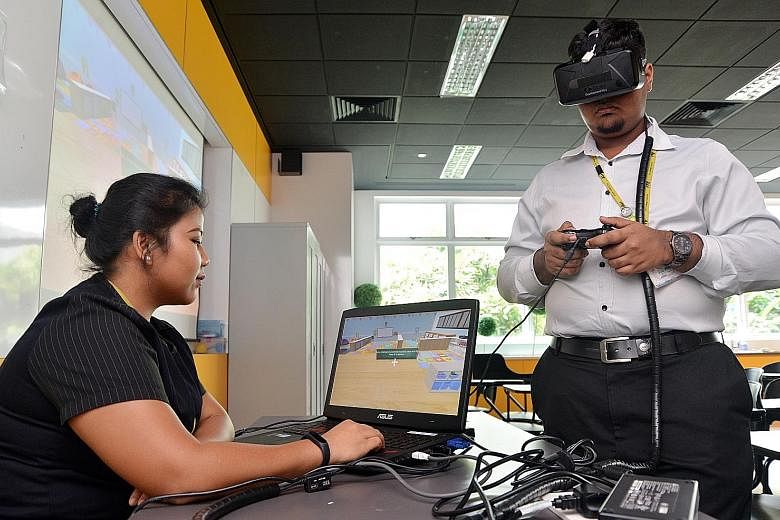Pre-school trainee teachers at the Institute of Technical Education (ITE) College Central can step into a playground, classrooms and toilets without moving an inch.
Since last year, they have been able to use virtual reality (VR) to step into five different pre-school environments to learn how to scan these places for signs of danger.
The project, known as Safe Haven, has five environments: a playground, two classrooms and two toilets for children of different ages.
Students in the two-year Higher Nitec in Early Childhood Education course have to do a six-month internship at the end of their second year. Before their internships, first-year trainee teachers can be trained under this VR project to check for potential hazards, such as sharp or broken objects.
By wearing an Oculus, a VR headset, trainee teachers can use a controller to first click on the object to identify and know more about it before subsequently removing the hazard from the environment.
Ms Vinothini Mariappan, a lecturer in early childhood education and part of the team who initiated the project, said: "A few years ago, I read about real incidents that happened at local childcare centres due to negligence from teachers. This VR project would allow us to instil a sense of awareness and safety into the students before they head out for their internships and become qualified teachers."
While she did not cite specific cases, one reported incident in 2013 involved a nine-month-old who was scalded by a cup of coffee left on the floor by an infant-care worker.
The VR project which started in 2013 was conceptualised by Ms Vinothini and another lecturer, Ms Nor Assurah, and developed by students in the Higher Nitec Games Art and Design course.
Each environment takes around 10 minutes to complete and students who first use the VR headset may experience slight dizziness, especially if they are prone to motion sickness. But this often subsides after the completion of one environment.
Ms Noor Rashikin Mohamed Rashid, 18, a second-year student, said: "The game is very enriching as it helps us visualise the preschool environment better. I am more of a visual learner and this is definitely a useful tool."
The project is set to be expanded for Year 2 students by allowing them to manipulate the objects in virtual reality to create their own learning environments.
This means students would be able to move tables and chairs with just a click of a button.


